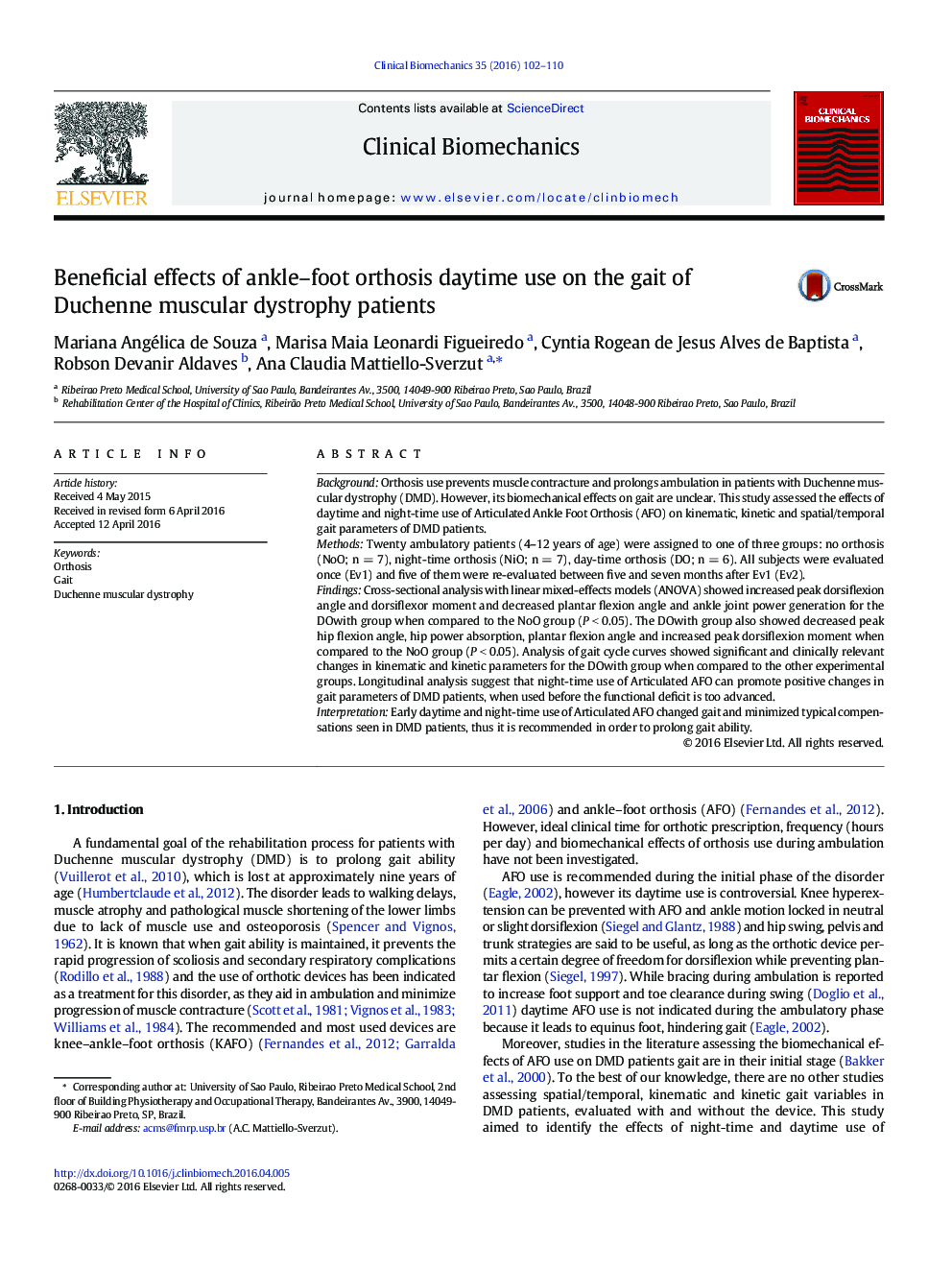| Article ID | Journal | Published Year | Pages | File Type |
|---|---|---|---|---|
| 4050113 | Clinical Biomechanics | 2016 | 9 Pages |
•Early and continuous use of night ankle-foot orthoses apparently minimized spatiotemporal and kinematic compensations.•Night ankle–foot orthoses can induce positive changes in gait when used before the advance of functional deficit.•Day and night ankle–foot orthoses use be prescribed early on and maintained during the course of the disease.
BackgroundOrthosis use prevents muscle contracture and prolongs ambulation in patients with Duchenne muscular dystrophy (DMD). However, its biomechanical effects on gait are unclear. This study assessed the effects of daytime and night-time use of Articulated Ankle Foot Orthosis (AFO) on kinematic, kinetic and spatial/temporal gait parameters of DMD patients.MethodsTwenty ambulatory patients (4–12 years of age) were assigned to one of three groups: no orthosis (NoO; n = 7), night-time orthosis (NiO; n = 7), day-time orthosis (DO; n = 6). All subjects were evaluated once (Ev1) and five of them were re-evaluated between five and seven months after Ev1 (Ev2).FindingsCross-sectional analysis with linear mixed-effects models (ANOVA) showed increased peak dorsiflexion angle and dorsiflexor moment and decreased plantar flexion angle and ankle joint power generation for the DOwith group when compared to the NoO group (P < 0.05). The DOwith group also showed decreased peak hip flexion angle, hip power absorption, plantar flexion angle and increased peak dorsiflexion moment when compared to the NoO group (P < 0.05). Analysis of gait cycle curves showed significant and clinically relevant changes in kinematic and kinetic parameters for the DOwith group when compared to the other experimental groups. Longitudinal analysis suggest that night-time use of Articulated AFO can promote positive changes in gait parameters of DMD patients, when used before the functional deficit is too advanced.InterpretationEarly daytime and night-time use of Articulated AFO changed gait and minimized typical compensations seen in DMD patients, thus it is recommended in order to prolong gait ability.
